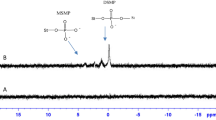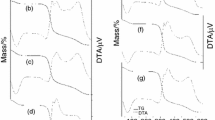Abstract
Physicochemical properties of acetylated (AC), cross-linked (CL), and hydroxypropylated (HP) chestnut starches were investigated. Modified chestnut starch showed low RS and amylose contents. AC revealed the highest solubility and HP showed the highest swelling power at 60 °C. CL showed the lowest solubility and swelling power at both 60 and 90 °C. AC and HP showed a lower pasting temperature and higher peak viscosity than native chestnut starch (NC). Modified chestnut starch formed gels at higher solid content than NC. CL had the lowest freeze–thaw stability, and AC and HP showed the strongest tolerance to freeze–thaw cycles. Amylopectin melting enthalpy of NC dramatically increased over the first 2 days and continued increasing gradually until day 24. On the other hand, all the modified chestnut starches showed a slight increase in amylopectin melting enthalpy, indicating retarded retrogradation. CL showed the lowest degree of retrogradation, followed by HP, AC, and NC.





Similar content being viewed by others
References
Baik MY, Kim KJ, Cheon KC, Ha YC, Kim WS. Recrystallization kinetics and glass transition of rice starch gel system. J. Agric. Food Chem. 45: 4242–4248 (1997)
Carmona-Garcia R, Sanchez-Rivera MM, Méndez-Montealvo G, Garza-Montoya B, Bello-Pérez LA. Effect of the cross-linked reagent type on some morphological, physicochemical and functional characteristics of banana starch (Musa paradisiaca). Carbohyd. Polym. 76: 117–122 (2009)
Choi HS, Kim HS, Park CS, Kim BY, Baik MY. Ultra high pressure (UHP)-assisted acetylation of corn starch. Carbohyd. Polym. 78: 862–868 (2009)
Colussi R, Pinto VZ, El Halal SLM, Vanier NL, Villanova FA, e Silva RM, da Rosa Zavareze E, Dias ARG. Structural, morphological, and physicochemical properties of acetylated high-, medium-, and low-amylose rice starches. Carbohyd. Polym. 103: 405–413 (2014)
Deetae P, Shobsngob S, Varanyanond W, Chinachoti P, Naivikul O, Varavinit S. Preparation, pasting properties and freeze–thaw stability of dual modified crosslink-phosphorylated rice starch. Carbohyd. Polym. 73: 351–358. (2008)
Demiate IM, Oetterer M, Wosiacki G. Characterization of chestnut (Castanea sativa Mill.) starch for industrial utilization. Braz. Arch. Biol. Technol. 44: 69–78 (2001)
Eliasson AC, Kim HR. Changes in rheological properties of hydroxypropyl potato starch pastes during freeze–thaw treatments I. A rheological approach for evaluation of freeze–thaw stability. J. Texture Stud. 23: 279–295(1992)
Food K, Association D. Food standards codex. Korean Foods Industry Association, Seoul, Korea. pp. 367–368 (2005)
Gonzalez Z, Perez E. Effect of acetylation on some properties of rice starch. Starch/Stärke 54: 148–154 (2002)
Han YJ, Kim SS. Relationship between RVA properties and film physical properties of native corn starch and hydroxypropylated corn starch. Korean J. Food Sci. Technol. 34: 1023–1029 (2002)
Harper JM. Extrusion of foods. CRC Press, Cambridge (1981)
Hwang DK, Kim SW, Kim JH, Ryu JH, Yoo SH, Park CS, Kim BY, Baik MY. In vitro digestibility of hydroxypropylated and cross-linked waxy and non-waxy rice starches. Starch/Starke 61: 20–27 (2009)
Johnson DP. Spectrophotometric determination of the hydroxypropyl group in starch ethers. Anal. Chem. 41: 859–860 (1969)
Kaur L, Singh J, Singh N. Effect of cross-linking on some properties of potato (Solanum tuberosum L.) starches. J. Sci. Food Agric. 86: 1945–1954 (2006)
Kaur L, Singh N, Singh J. Factors influencing the properties of hydroxypropylated potato starches. Carbohyd. Polym. 55: 211–223 (2004)
Kim HY, Oh SM, Bae JE, Yeom JH, Kim BY, Kim HS, Baik MY. Preparation and characterization of amorphous granular potato starches (AGPS) and cross-linked amorphous granular potato starches (CLAGPS). Carbohyd. Polym. 178: 41–47 (2017)
Lawal OS. Succinyl and acetyl starch derivatives of a hybrid maize: Physicochemical characteristics and retrogradation properties monitored by differential scanning calorimetry. Carbohyd. Res. 339: 2673–2682 (2004)
Leach HW. Structure of starch granules. I. Swelling and solubility patterns of various starches. Cereal Chem. 36: 534–544 (1959)
Lee JW, Choi HW, Seo DH, Park JD, Kum JS, Kim BY, Baik MY. Isolation and characterization of starches from chestnuts cultivated in three regions of Korea. Starch/Stärke 67: 585–594 (2015)
McCleary BV, McNally M, Rossiter P. Measurement of resistant starch by enzymatic digestion in starch and selected plant materials: collaborative study. J. AOAC Int. 85: 1103–1111 (2002)
Miyazaki M, Van Hung P, Maeda T, Morita N. Recent advances in application of modified starches for breadmaking. Trends Food Sci. Technol. 17: 591–599 (2006)
Morrison WR, Laignelet B. An improved colorimetric procedure for determining apparent and total amylose in cereal and other starches. J. Cereal Sci. 1: 9–20 (1983)
Oh SM, Choi HW, Kim BY, Baik MY. Retrogradation kinetics of chestnut starches cultivated in three regions of Korea. Food Sci. Biotechnol. 26: 663–670 (2017)
Park Y, Kim JH, Hwang TY, Moon KD. Physicochemical properties of hydroxypropylated chestnut starch. Korean J. Food Sci. Technol. 31: 999–1004 (1999)
Shi M, Gu F, Wu J, Yu S, Gao Q. Preparation, physicochemical properties, and in vitro digestibility of cross-linked resistant starch from pea starch. Starch/Stärke 65: 947–953 (2013)
Shubeena I, Ahmed I, Gani A, Sharma P, Wani TA, Masoodi FA, Hamdani A, Muzafar S. Effect of acetylation on the physico-chemical properties of Indian Horse Chestnut (Aesculus indica L.) starch. Starch/Stärke 67: 311–318 (2015)
Singh J, Kaur L, McCarthy O. Factors influencing the physico-chemical, morphological, thermal and rheological properties of some chemically modified starches for food applications—A review. Food Hydrocolloids 21: 1–22 (2007)
Slade L, Levine H. Glass transitions and water-food structure interactions. Adv. Food Nutr. Res. 38: 103–269 (1995)
Van Hung P, Morita N. Physicochemical properties of hydroxypropylated and cross-linked starches from A-type and B-type wheat starch granules. Carbohyd. Polym. 59: 239–246 (2005)
Wang YJ, Wang L. Characterization of acetylated waxy maize starches prepared under catalysis by different alkali and alkaline-earth hydroxides. Starch/Stärke 54: 25–30 (2002)
Wongsagonsup R, Pujchakarn T, Jitrakbumrung S, Chaiwat W, Fuongfuchat A, Varavinit S, Dangtip S, Suphantharika M. Effect of cross-linking on physicochemical properties of tapioca starch and its application in soup product. Carbohyd. Polym. 101: 656–665. (2014)
Woo K, Seib P. Cross-linked resistant starch: Preparation and properties. Cereal Chem. 79: 819–825 (2002)
Wootton M, Chaudhry M. In vitro digestion of hydroxypropyl derivatives of wheat starch. I. Digestibility and action pattern using porcine pancreatic alpha-amylase. Starch/Stärke 33: 135–137 (1981)
Wootton M, Manatsathit A. The influence of molar substitution on the water binding capacity of hydroxypropyl maize starches. Starch/Stärke 35: 92–94 (1983)
Wurzburg OB. Nutritional aspects and safety of modified food starches. Nutr. Rev. 44: 74–79 (1986)
Acknowledgements
This research was supported by the Main Research Program (E0164800-03) of the Korea Food Research Institute (KFRI) funded by the Ministry of Science, ICT and Future Planning.
Author information
Authors and Affiliations
Corresponding author
Ethics declarations
Conflicts of interest
The authors declare that they have no conflict of interest.
Additional information
Publisher's Note
Springer Nature remains neutral with regard to jurisdictional claims in published maps and institutional affiliations.
Rights and permissions
About this article
Cite this article
Oh, SM., Kim, Hy., Bae, JE. et al. Physicochemical and retrogradation properties of modified chestnut starches. Food Sci Biotechnol 28, 1723–1731 (2019). https://doi.org/10.1007/s10068-019-00622-8
Received:
Revised:
Accepted:
Published:
Issue Date:
DOI: https://doi.org/10.1007/s10068-019-00622-8




